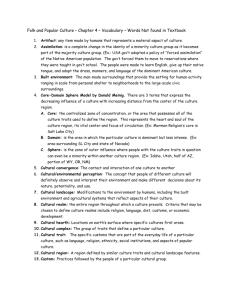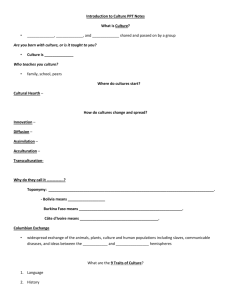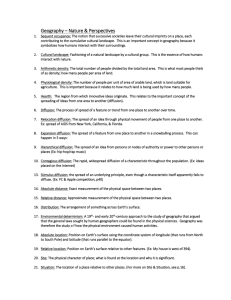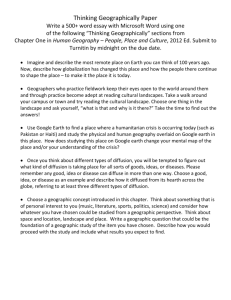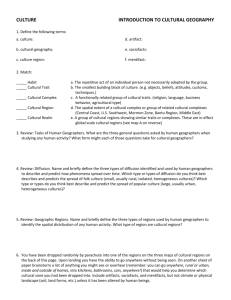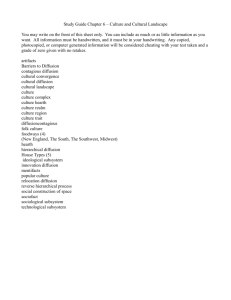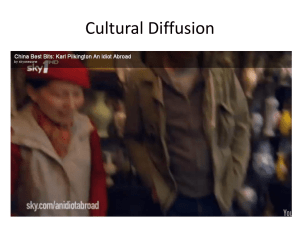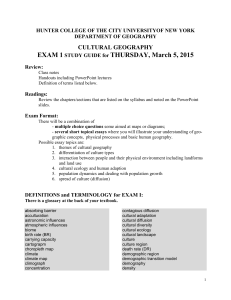What is Cultural Geography
advertisement
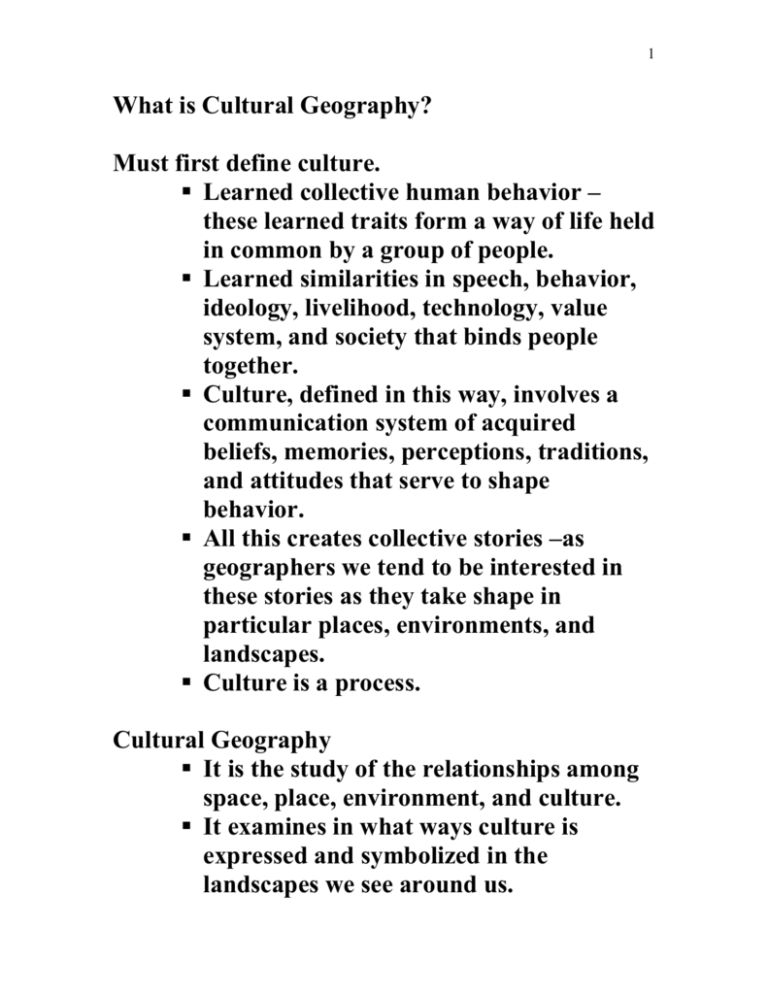
1 What is Cultural Geography? Must first define culture. Learned collective human behavior – these learned traits form a way of life held in common by a group of people. Learned similarities in speech, behavior, ideology, livelihood, technology, value system, and society that binds people together. Culture, defined in this way, involves a communication system of acquired beliefs, memories, perceptions, traditions, and attitudes that serve to shape behavior. All this creates collective stories –as geographers we tend to be interested in these stories as they take shape in particular places, environments, and landscapes. Culture is a process. Cultural Geography It is the study of the relationships among space, place, environment, and culture. It examines in what ways culture is expressed and symbolized in the landscapes we see around us. 2 It provides a perspective for understanding how people function spatially and identify with place and region. Geographers seek an integrated view of humankind in its physical environment. Themes in Cultural Geography I. Culture Region A. Formal Culture Regions An area that is relatively homogeneous with regard to one or more cultural traits. However, no two cultural traits have the exact same distribution. As a result, there are cultural border zones (transition areas) A Core/Periphery emerges with respect to traits (language) B. Functional Culture Regions They have (nodes) centers of operation 3 Sometimes they have clear boundaries (City) A core/periphery can emerge (TV & newspapers) C. Vernacular Culture Regions A region that one perceives to exist. Examples: the “South” & “Midwest” People have a sense of belonging to the region Sometimes they have a Core II. Cultural Diffusion How ideas, practices, behaviors, and technologies spread Geographically? A. Relocation Diffusion (migration) - Culture is like luggage. B. Expansion Diffusion (snowballing effect) 1. Hierarchical Diffusion 2. Contagious Diffusion 4 3. Stimulus Diffusion Distance Decay – diffusion decreases with distance Absorbing Barriers (Taliban) Permeable Barriers Acceptance of Innovations (early adopters, adopters, laggerts) Neighborhood Effect Role of Globalization - Improved transport and communications allow instantaneous diffusion of ideas, and innovations. An increasingly linked world with respect to capitalistic economies and politics, in which, international borders are diminished in importance and a world-wide market place is created. III. Cultural Ecology How do people interact with their environment? People’s cultural values and practices have impacts. There are four schools of thought that have evolved 5 within the Cultural Ecology tradition. 1. Environmental Determinism 9pre 1920s) 2. Possibilism (post 1920s) 3. Environmental Perception - Natural Hazards - How does a particular culture view nature - Organic view (a part of nature) - Mechanistic view (apart from nature) 4. Humans as Modifiers of the Earth - Seek to understand and explain the processes of environmental alteration from culture to culture. - Gender differences (Ecofeminism) IV. Cultural Interaction How do the many different traits within a culture influence one another? All facets of culture are systematically and spatially intertwined. A change in one element of culture requires accommodating changes in other cultural traits. Examples religion and voting patterns & religion and food taboos 6 - Spatial Models - to help explain cultural tendencies - Sense of Place – the uniqueness of each place on Earth - Power & Ideology V. The Cultural Landscape What is the visible expression of culture? What do culture regions look like? Landscape mirrors culture (shelter, food, and clothing) “Reading the Landscape” Symbolic Landscapes 1. Settlement Forms - the spatial arrangement of society (nucleated/dispersed) 2. Land-Division Patterns - Meets & Bounds, Long-Lot system, Range & Township) 3. Architectural Styles (dwellings)

